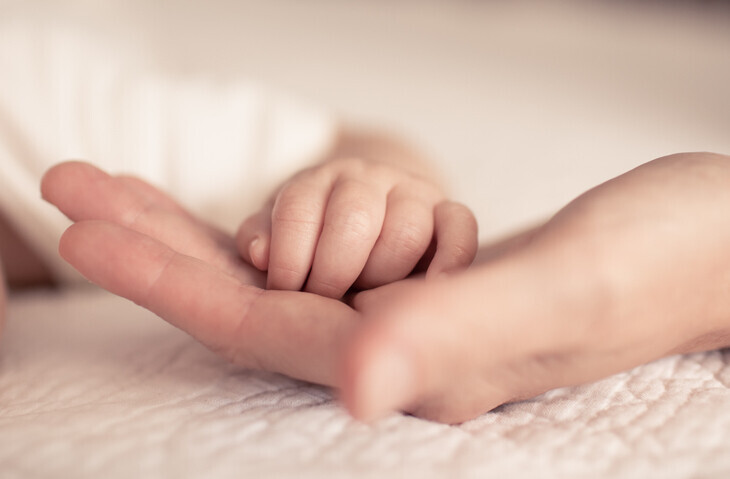hankyoreh
Links to other country sites 다른 나라 사이트 링크
6 in every 100 newborns in S. Korea born to multicultural families

Six out of every 100 children born in South Korea last year were born to multicultural families, statistics show.
On Monday, Statistics Korea announced its 2020 figures on multicultural population trends. The findings showed that multicultural families — defined as families where one parent is a foreign national or naturalized South Korean or where both parents are naturalized — accounted for 16,421 children born last year, a decrease of 8.5% from the year before.
The number of children born to multicultural families in South Korea has been on the decline since peaking at 22,908 in 2012. But as a percentage of all births, it has steadily risen, increasing from 4.5% in 2015 to reach 6% for the first time last year.
Amid a low birth rate trend that has seen a sharp drop in the percentage of families having second and third children, another notable statistic is the fact that 1 in 10 children born to multicultural families was a third or later child for their household.
Among the children born to multicultural families, 57.5% were first children, 31.5% were second children and 11% were third or later children.
The percentage of third or later children born to multicultural families was nearly double the 5.6% recorded a decade earlier in 2010. For South Korean households in general, the percentage of children born who were the third child or later for their family dropped from 10.9% in 2010 to 8.1% in 2020.
The number of multicultural marriages last year was counted at 16,177 last year — registering a steep drop of 34.6% from the year before amid the COVID-19 pandemic.
When statistics were first tallied on the number of multicultural marriages in 2008, the total stood at 36,629. It declined in subsequent years before entering a renewed rise as of 2016, when 21,709 marriages were recorded.
The 24,721 multicultural marriages counted in 2019 amounted to 10.3% of all marriages that year, a similar proportion to the 10.8% recorded for 2010. But with the COVID-19 pandemic emerging last year, both the number and percentage plummeted.
In terms of composition, 66.4% of all multicultural marriages were between a South Korean man and a foreign national woman. Marriages between a South Korean woman and a foreign national man accounted for 18.7%, while 14.9% of multicultural marriages involved one or two naturalized spouses.
By age, the largest proportion of women entering multicultural marriages were in their late 20s, accounting for 26%.
Another 4.3% of women entering multicultural marriages were found to be minors under the age of 19. The percentage of minors was down by more than half from 11.1% a decade earlier in 2010.
By Lee Ji-hye, staff reporter
Please direct questions or comments to [english@hani.co.kr]

Editorial・opinion
![[Column] Season 2 of special prosecutor probe may be coming to Korea soon [Column] Season 2 of special prosecutor probe may be coming to Korea soon](https://flexible.img.hani.co.kr/flexible/normal/500/300/imgdb/original/2024/0426/3317141030699447.jpg) [Column] Season 2 of special prosecutor probe may be coming to Korea soon
[Column] Season 2 of special prosecutor probe may be coming to Korea soon![[Column] Park Geun-hye déjà vu in Yoon Suk-yeol [Column] Park Geun-hye déjà vu in Yoon Suk-yeol](https://flexible.img.hani.co.kr/flexible/normal/500/300/imgdb/original/2024/0424/651713945113788.jpg) [Column] Park Geun-hye déjà vu in Yoon Suk-yeol
[Column] Park Geun-hye déjà vu in Yoon Suk-yeol- [Editorial] New weight of N. Korea’s nuclear threats makes dialogue all the more urgent
- [Guest essay] The real reason Korea’s new right wants to dub Rhee a founding father
- [Column] ‘Choson’: Is it time we start referring to N. Korea in its own terms?
- [Editorial] Japan’s rewriting of history with Korea has gone too far
- [Column] The president’s questionable capacity for dialogue
- [Column] Are chaebol firms just pizza pies for families to divvy up as they please?
- [Column] Has Korea, too, crossed the Rubicon on China?
- [Correspondent’s column] In Japan’s alliance with US, echoes of its past alliances with UK
Most viewed articles
- 1‘We must say no’: Seoul defense chief on Korean, USFK involvement in hypothetical Taiwan crisis
- 2Is Japan about to snatch control of Line messenger from Korea’s Naver?
- 3[Editorial] Korea’s surprise Q1 growth requires objective assessment, not blind fanfare
- 4Division commander ordered troops to enter raging flood waters before Marine died, survivor says
- 5No good, very bad game for Korea puts it out of Olympics for first time since 1988
- 6Korea’s 1.3% growth in Q1 signals ‘textbook’ return to growth, says government
- 7[Reportage] On US campuses, student risk arrest as they call for divestment from Israel
- 8N. Korean delegation’s trip to Iran shows how Pyongyang is leveraging ties with Moscow
- 9Flying “new right” flag, Korea’s Yoon Suk-yeol charges toward ideological rule
- 10[Column] Park Geun-hye déjà vu in Yoon Suk-yeol